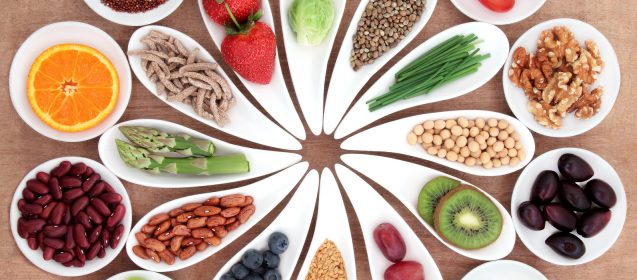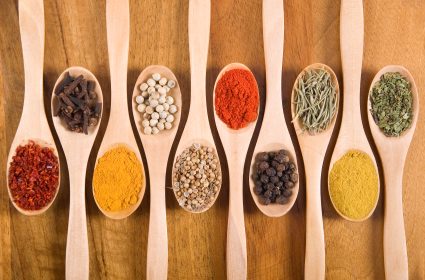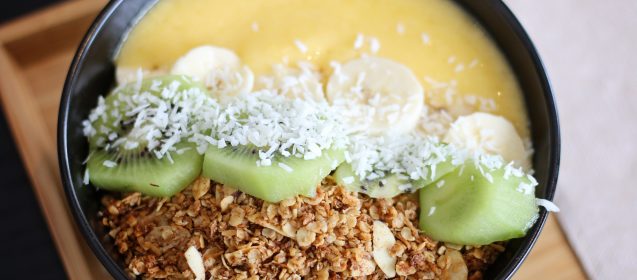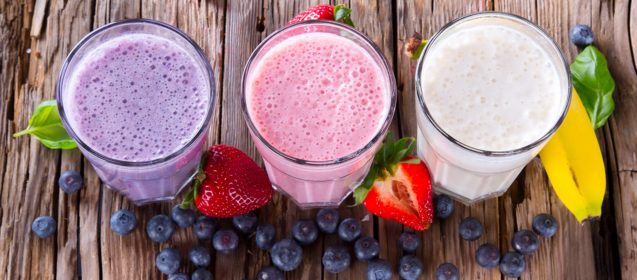Exercise To Prevent And Relieve Back Pain
 Many people in the workforce find themselves facing the dilemma of being unable to sit comfortably, lift or even move because of excruciating back pain. That leads to one of the biggest reasons for disability claims. It doesn’t have to be that way. You can exercise to prevent and relieve back pain. There’s a lot of reasons for the surge of this painful condition. One of them is prolonged sitting. Lack of activity and functional fitness is at the top of the list. Your muscles need to stretch and move to be at their healthiest. Improved circulation, strength and flexibility help tremendously. At one time, muscle relaxers and pain medication were at the top of the treatment list. With the high rise in pain medication addiction and more understanding of the problem, that’s no longer true.
Many people in the workforce find themselves facing the dilemma of being unable to sit comfortably, lift or even move because of excruciating back pain. That leads to one of the biggest reasons for disability claims. It doesn’t have to be that way. You can exercise to prevent and relieve back pain. There’s a lot of reasons for the surge of this painful condition. One of them is prolonged sitting. Lack of activity and functional fitness is at the top of the list. Your muscles need to stretch and move to be at their healthiest. Improved circulation, strength and flexibility help tremendously. At one time, muscle relaxers and pain medication were at the top of the treatment list. With the high rise in pain medication addiction and more understanding of the problem, that’s no longer true.
Prevent back pain before it starts.
Even if you don’t suffer from back pain yet, if you’re in a sedentary job and have no active outlet when not at work, the odds of suffering from it in the future are great. Your muscles need regular activity to be at their strongest and prevent tightening. When you sit at a desk, or even on the couch, for prolonged periods, the muscles in your lower back start to shorten, until eventually, you have a full-blown case of back pain. Exercising on a regular basis can reduce the risk of back pain, even in people who have episodes already.
Stretching is an effect way to prevent and manage back pain.
When your back hurts, you just want to lay down until the pain subsides, but that’s the worse thing you can do. One quick exercise that can help lower back pain does require you to lay on the floor. It’s the hamstring stretch. Grab a towel before you lay down. Put your feet flat on the floor with knees bent. Hold one end of the towel in each hand, creating a loop. Lift one leg and put the loop around the sole of the foot, still holding onto the towel ends. Try to straighten that leg by slowly pulling on the towel. While you may not keep pulling until it’s perpendicular to the body, you will feel the stretch at the back of the leg. Hold that position for about a half minute. Lower the leg and put the towel loop around the bottom of the other foot.
Laying on your back with another exercise can also loosen muscles.
Lay on your back with your feet flat on the floor and knees bent. Put your arms straight out to help maintain position. You should rock your knees from side to side a bit, to get your muscles warmed up and looser. Lower your legs to one side, trying to keep your shoulders flat to the floor at the same time. Try to get the outer knee on the side you’re twisting toward to touch the floor. Slowly lift your knees back up and twist them to the other side of your body.
- Try the cat pose. If you watch cats, they’re constantly stretch. Get on your hands and knees. Inhale, and when you exhale, arch your back, head facing downward. Inhale, but this time as you do, allow your belly to drop and raising your head, creating a concave curve.
- Create a bridge. Lay on the floor, knees bent. Lift your bottom off the floor, while pushing with your heels and squeezing your buttocks muscles. Hold, lower and repeat.
- Pull your knee to your chest while laying on your back. You can do one at a time, keeping the other extended to slowly stretch the back muscles. You can also do the same thing pulling both at the same time, holding for a few seconds and then lowering the legs.
- Build stronger stomach muscles. Your back is supported by both the abdominal and back muscles. That’s why building a stronger core is important.



 If you want to extend your lifespan, just move! You don’t need a formal training program, although they do provide a wide assortment of exercises for your entire body and all types of fitness. Adding more movement to your life, whether it’s just getting up and walking for a few minutes or doing a jumping jack or two every ten minutes, can boost your longevity. Studies show that people who move more have better cardiovascular and metabolic function. In fact, inactivity is up at the top in number four position of preventable deaths. Obesity is number one and everyone knows that inactivity can lead to obesity.
If you want to extend your lifespan, just move! You don’t need a formal training program, although they do provide a wide assortment of exercises for your entire body and all types of fitness. Adding more movement to your life, whether it’s just getting up and walking for a few minutes or doing a jumping jack or two every ten minutes, can boost your longevity. Studies show that people who move more have better cardiovascular and metabolic function. In fact, inactivity is up at the top in number four position of preventable deaths. Obesity is number one and everyone knows that inactivity can lead to obesity.
 If you’ve heard the term “inflammation” but aren’t quite sure what it means, you probably aren’t alone. It occurs as a response from the body to protect itself. There are two types of inflammation and this is usually where people get confused. There’s the acute type that occurs all of a sudden, like bashing your finger or getting a cold. The body gets into gear and sends it’s soldiers, the white blood cells, to protect it from infection. It makes the area red and swollen. Chronic inflammation comes from continual exposure to toxins or stress. It can damage the heart and create walls to block accumulated plaque in the blood vessels. When those fail, it creates a clot and that can cause heart attacks and strokes. There are many medications to fight inflammation, but some of the best are found in your spice cabinet. You can save money by growing them yourself. Here are herbs you can grow to fight inflammation.
If you’ve heard the term “inflammation” but aren’t quite sure what it means, you probably aren’t alone. It occurs as a response from the body to protect itself. There are two types of inflammation and this is usually where people get confused. There’s the acute type that occurs all of a sudden, like bashing your finger or getting a cold. The body gets into gear and sends it’s soldiers, the white blood cells, to protect it from infection. It makes the area red and swollen. Chronic inflammation comes from continual exposure to toxins or stress. It can damage the heart and create walls to block accumulated plaque in the blood vessels. When those fail, it creates a clot and that can cause heart attacks and strokes. There are many medications to fight inflammation, but some of the best are found in your spice cabinet. You can save money by growing them yourself. Here are herbs you can grow to fight inflammation.
 Just as there are reasons to exercise every day, there are a lot of reasons that workout is not necessarily at the gym. Exercising is more than just a regular workout doing body weight exercises, treadmill or other tough muscle stressing workouts. It’s getting out and having fun, while also improving your overall fitness. There are people who workout at the gym at high intensity levels for hours, every day. That’s not healthy! Your muscle groups need time to recoup. You need to have a blend of intensity levels, plus use a variety of different muscle groups.
Just as there are reasons to exercise every day, there are a lot of reasons that workout is not necessarily at the gym. Exercising is more than just a regular workout doing body weight exercises, treadmill or other tough muscle stressing workouts. It’s getting out and having fun, while also improving your overall fitness. There are people who workout at the gym at high intensity levels for hours, every day. That’s not healthy! Your muscle groups need time to recoup. You need to have a blend of intensity levels, plus use a variety of different muscle groups.
 I don’t normally blog about things like loneliness and stick normally with fitness topics, like exercise and diet. However, I was just reading about the effects of loneliness on health and realized that it not only is becoming an epidemic, it’s almost as lethal as obesity. Unfortunately, when people are obese, they also isolate themselves from others, creating a double dose of problems. Even though everyone in Louisville KY is friendly, there’s still an epidemic of loneliness here. It’s one reason that people often find that our group training provides more benefits. Not only are the participants getting a great workout and expert nutritional advice, they’re also making friends and having social interaction that’s fun.
I don’t normally blog about things like loneliness and stick normally with fitness topics, like exercise and diet. However, I was just reading about the effects of loneliness on health and realized that it not only is becoming an epidemic, it’s almost as lethal as obesity. Unfortunately, when people are obese, they also isolate themselves from others, creating a double dose of problems. Even though everyone in Louisville KY is friendly, there’s still an epidemic of loneliness here. It’s one reason that people often find that our group training provides more benefits. Not only are the participants getting a great workout and expert nutritional advice, they’re also making friends and having social interaction that’s fun.
 If you’ve followed every diet, you’ve probably eating every two hours, had normal meals or packed all your meals into a short time frame in an effort to lose weight. It’s been popular for weight loss experts to tell clients to eat more often for weight loss, because some studies showed that it boosts metabolism and keeps you burning calories in high gear throughout the day. However, other studies show that eating normal meals works just as well. Finally, there are also studies that show that intermittent fasting for 16 hours and eating all meals in an eight hour window also has weight loss and other benefits. Which one is right? Maybe they all are.
If you’ve followed every diet, you’ve probably eating every two hours, had normal meals or packed all your meals into a short time frame in an effort to lose weight. It’s been popular for weight loss experts to tell clients to eat more often for weight loss, because some studies showed that it boosts metabolism and keeps you burning calories in high gear throughout the day. However, other studies show that eating normal meals works just as well. Finally, there are also studies that show that intermittent fasting for 16 hours and eating all meals in an eight hour window also has weight loss and other benefits. Which one is right? Maybe they all are.
 I’m always telling clients to learn to use herbs and spices when cooking, to boost flavor and add nutrients without adding extra calories. There’s a number of special herbs that play an even more vital role in health. They’re called adaptogens. An adaptogen provides the material to help your body cope more easily with the stresses of living that can suck the energy out of it. They help boost the immune system, provide aid in keeping weight under control, improve endurance, make you feel better and even improve your mood.
I’m always telling clients to learn to use herbs and spices when cooking, to boost flavor and add nutrients without adding extra calories. There’s a number of special herbs that play an even more vital role in health. They’re called adaptogens. An adaptogen provides the material to help your body cope more easily with the stresses of living that can suck the energy out of it. They help boost the immune system, provide aid in keeping weight under control, improve endurance, make you feel better and even improve your mood.
 Sure, a massage feels good, but there are also other body benefits of massage that can improve your functioning and health. After a tough workout, it can help to improve circulation and loosen tight muscles and tendons. That allows blood to circulate better and can whisk off the build up lactic acid in your muscle fiber. You’ll speed recovery time and have better pain management. Some athletes like their massage before a workout to warm muscle tissue and improve flexibility. Either way, a massage provides benefits.
Sure, a massage feels good, but there are also other body benefits of massage that can improve your functioning and health. After a tough workout, it can help to improve circulation and loosen tight muscles and tendons. That allows blood to circulate better and can whisk off the build up lactic acid in your muscle fiber. You’ll speed recovery time and have better pain management. Some athletes like their massage before a workout to warm muscle tissue and improve flexibility. Either way, a massage provides benefits.
 If you’re trying to eat healthy and just take the advice of television commercials or the hype on the labels, you’ll soon realize that not all health foods are healthy. One look at the label that reads like a college chemistry formula should scare you into doing far more research than ever. Even though that tub of margarine says vegan, it doesn’t mean its healthier than butter—especially butter from the milk of grass fed raised cows. Butter has been part of the human diet for almost 4000 years. It has just one, possibly two ingredients if its salted, unlike many of the margarine “health food” butters. Many of the “healthy” non-butter alternatives contain far more ingredients with things like “natural flavors” (code word for chemicals) and substances not in a whole food diet.
If you’re trying to eat healthy and just take the advice of television commercials or the hype on the labels, you’ll soon realize that not all health foods are healthy. One look at the label that reads like a college chemistry formula should scare you into doing far more research than ever. Even though that tub of margarine says vegan, it doesn’t mean its healthier than butter—especially butter from the milk of grass fed raised cows. Butter has been part of the human diet for almost 4000 years. It has just one, possibly two ingredients if its salted, unlike many of the margarine “health food” butters. Many of the “healthy” non-butter alternatives contain far more ingredients with things like “natural flavors” (code word for chemicals) and substances not in a whole food diet.
 Everyone loves green smoothies and those icy cold drinks that cool you down and taste a bit like drinking a fruity malt, but did you know warm smoothies can be just as inviting, especially on cold days. Whether it’s winter or just a chilly spring or fall day, a warm smoothie can be just what you need to boost more vegetable intake and cut back on fruit that most cold smoothies contain.
Everyone loves green smoothies and those icy cold drinks that cool you down and taste a bit like drinking a fruity malt, but did you know warm smoothies can be just as inviting, especially on cold days. Whether it’s winter or just a chilly spring or fall day, a warm smoothie can be just what you need to boost more vegetable intake and cut back on fruit that most cold smoothies contain.